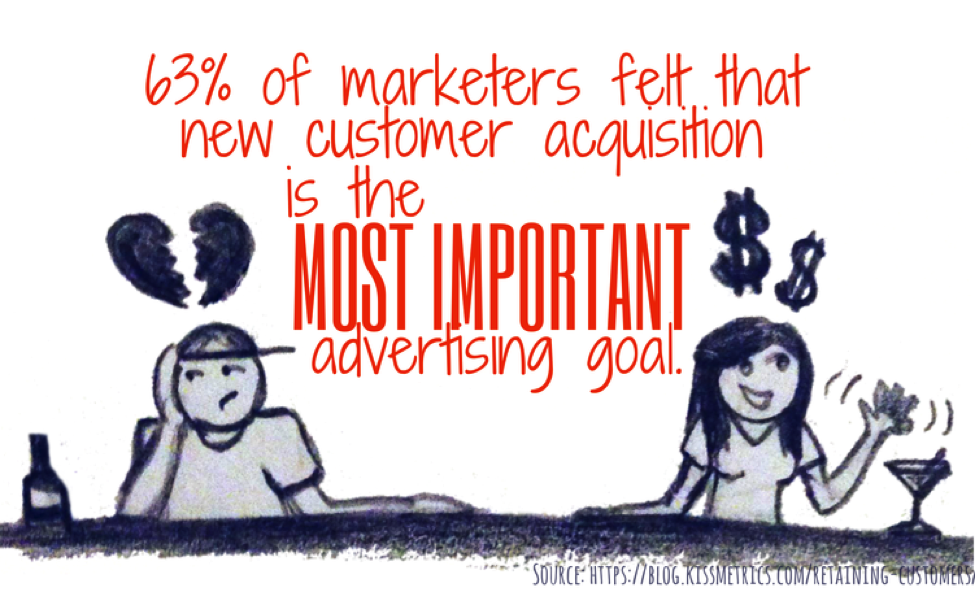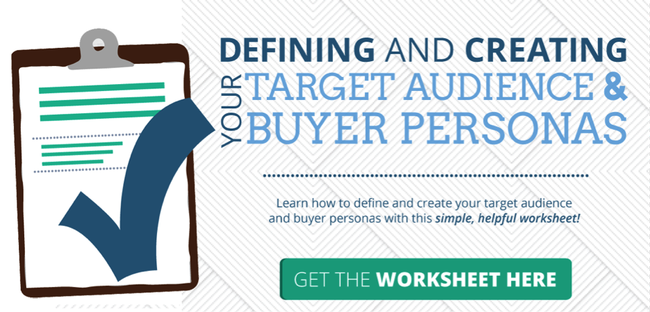 This post originally appeared on the Insiders section of Inbound Hub. To read more content like this, subscribe to Insiders.
This post originally appeared on the Insiders section of Inbound Hub. To read more content like this, subscribe to Insiders.
“I’d like to propose that we spend some time and resources to research our current customers and target market,” the Marketing Director of Company A sheepishly declared during the monthly board meeting. “I just think that we should make sure we’re delivering to the customers we have; you know, keeping them happy?”
Heads in the boardroom turned to the puzzled CEO.
“Listen, we love our customers, but we need more of them.” the CEO declared with disdain, “We’ve obtained customers through successful marketing campaigns in the past, and we’re going to use the strategies that we know work. End of story.”
Refusing to incorporate fresh new marketing strategies to fulfill their current customers’ needs, Company A’s customer retention rate plummeted soon thereafter, and with that, their yearly revenue.
Sure, I may have dreamed up that particular scenario (it’s the creative writer in me), but I would be willing to bet that similar scenarios have played out in the real world when businesses neglect their existing customers’ needs.
I mean, let’s face it; some businesses don’t know Jack.
Who is Jack?
Jack is your customer, but he feels insignificant and disconnected from your business. If you continue ignoring his wants and needs, he might just become another lost customer.
The truth hurts sometimes.
Many businesses operate with an inside-out mentality, which means they assume all the knowledge and resources necessary to give people what they want and need are found internally (within the walls of the business).
That may have worked in the past when businesses were advertising to the masses. But today consumers expect to be understood as individuals, getting what they want from a business before they even know they want it.
Consumers don’t just want products and services; they want a connection and an experience.
For this reason, it’s imperative for businesses to be human and personable, making each customer feel special through every step of the buying process and long after. (Kinda sounds like a little thing called inbound marketing.)
Why do I need to focus on someone I’ve already won over?

Put simply: customer retention. It’s easy to overlook, but vital to the success of a business.
While 63% of marketers believe that acquiring new customers is the most important advertising goal, it’s the current, loyal customer base with the greater lifetime value. Not only that, but it can actually cost almost seven times more to acquire new customers.
We’ve all heard of the Pareto Principle, also known as the “80/20 rule”, which has been found true in a variety of instances. Interestingly, it also applies to many businesses’ customer base, with 80% of revenue coming from 20% of customers — that 20% being loyal customers.
Treating that 20% of your customers like VIPs will return some serious benefits; especially since, according to a super helpful infographic by FiveStars, less than 20% of new “daily deals-esque” customers are likely to come back to pay full price.
So it’s important to pay attention to current customers like Jack, because they have the potential to be your greatest advertising asset. While it’s always been essential to business growth, word-of-mouth advertising is exceedingly effective in today’s super-social world.
According to research by Forrester, 70% of consumers trust business recommendations from friends and family, but only 10% will trust advertising. So why waste all your time and resources like Company A when you have a band of loyal customers willing to spread the news of how wonderful you are?
Makes a lot of sense right?
How can I tell if I’m not reaching Jack?
There are many signs that your business may be failing to reach its audience properly. Here’s a handful of possible indicators:
- Your customer retention rate isn’t great
- You aren’t acquiring new customers as consistently as you once did
- You’re running into more customer service issues
- You have little to no engagement on social media
- You’re receiving more negative reviews than positive ones
If any of these sound familiar to your business, I highly suggest taking preemptive action now and show your customers some serious love — before someone else does.
How can I strengthen the relationship?
If you’ve recognized that you’re clearly not reaching your customers the way you’d like to, it’s time to find Jack, get to know him, understand his wants and needs, and build a delightful (and with care, long) relationship together.
Define your target audience
The first step is acknowledging that you do have a target audience you’re trying to reach. Next it’s time to define it.
It’s important to understand who would benefit from your products and services, what kind of problems they face and how you can solve those problems better than anyone else.
There are countless combinations of questions you could answer about your audience to understand them better, but generally, it’s suggested to begin breaking down the demographics and psychographics of your target audience.
Demographics include things like gender, age, income, and location. Psychographics include beliefs, values, attitudes, and behaviors. All of these will influence a consumer’s feelings about a business and purchase decisions.
A good place to start when defining your target audience is evaluating your current customers with things like your website’s analytics, Facebook insights, and Twitter Analytics. You can also talk to your salespeople to see what kind of customer trends they see the most. (Note: Salespeople can benefit greatly from knowing their target audience and the development of buyer personas. This will help them understand how to react in different situations with different prospects.)
Create buyer personas
You’ve identified who your target audience is, but when you look at that audience as a large crowd of people, it’s overwhelming and difficult to understand them. By breaking up your audience into buyer personas, you can better understand who it is you’re marketing to.
“Buyer personas are examples of the real buyers who influence or make decisions about the products, services, or solutions you market. They are a tool that builds confidence in strategies to persuade buyers to choose you rather than a competitor or the status quo.”
Think of it this way: Instead of screaming and trying to grab the undivided attention of a full arena of people, you’re out to coffee, intimately conversing with Jack and 2-3 more of his closest friends.
The development of buyer personas can get pretty complicated, even for the most savvy marketer. Thus, we’ll just start with some basic questions to answer as laid out in the post 9 Questions You Need to Ask When Developing Buyer Personas via HubSpot:
What is their job description?
- What is their role in their company?
- What are their normal responsibilities?
- Are they the key decision maker?
What are their pain points?
- How does this affect their day-to-day?
- How does it make them feel?
- How can you solve this problem?
What is important to them in life?
- What do they value? (e.g. family, career, etc.)
- What kind of goals do they have?
Where do they search for information?
- Do they prefer the internet or to get information in person?
What kind of experience would they want/expect while in business with you?
- Are they more hands-on, expecting a face-to-face meeting?
- Are they more inclined to do business easily online or on the phone?
Can you identify objections they might have with your products/services?
- Why might they be hesitant to invest in your products or services?
- If not purchasing for the first time from your industry, what made them want to make a switch?
Developing buyer personas and putting a face to your otherwise faceless audience is going to help you understand and connect with them, thus enabling you to provide a personalized and enjoyable experience for them.
Really Get to Know Jack
The second part of building any relationship is really getting to know who someone is, their likes and interests, etc.
Now that you’ve defined your target audience and created buyer personas to help create targeted and personable content, it’s time to take your relationship with Jack to the next level.
You have a good idea of who he is, you’ve taken some time to understand where he spends time online, and the problems he might be facing that you can help with. But you haven’t really let him talk about himself.
Social Monitoring
Social media monitoring tools help you listen to what your customers and prospects are saying about your business, keep on top of industry trends, keep an eye on your competition and much more. There are a lot of tools out there that can help you based on what you’d like to know. KISSmetrics created this nifty infographic all about social monitoring tools, who invests in them, what the best free ones are and more. (HubSpot customers: Social Inbox has you covered here.)
Surveys
You can easily get to know your audience better by asking them exactly what you want to know. That’s where surveys come in! Keeping a constant line of communication between your business and its customers will help build trust and respect and surveys are the perfect way to do it. Services like FluidSurveys and SurveyMonkey make it easy to create surveys (short or long) post them on social media, or send them in a personal email.
Social Media Interaction
Consumers crave human connection, and your social media outlets give you the perfect opportunity to interact with your fans and followers, showing them you care and making them feel important to your business. Social media is synonymous with customer service these days.
Keep Jack Happy
This is the fun part! Now that you know Jack, you get to delight him with all the fantastic content you’re capable of creating — made just for him, when he wants it.
Blogging
Write interesting and helpful blogs and monitor which ones perform the best. According to the QuickSprout infographic Why Every Business Should Blog, 60% of consumers have positive feelings about a company after reading its blog and 61% of consumers have actually made a purchase based on a blog post that they read. If those stats aren’t convincing, I don’t know what is.
Email Marketing
A huge part of the success of inbound marketing is email marketing. Send loveable emails to your customers when they need it. Did someone download a social media ebook? Send them an email with some of the blogs you’ve written on Facebook marketing tips or why people should invest in Twitter.
Surveys
Send periodic surveys to ensure you’re keeping customers happy and simultaneously building a solid understanding of what it is you could be doing better.
Marketing Automation
Another fundamental part of a successful inbound marketing strategy: you’ll be at the right place at the right time, feeding your prospects the content they want. Marketing automation can help you do just that.
Customer Loyalty Programs
When it comes to customer retention, creating loyalty programs to treat that special 20% we talked about like VIPs is definitely going to pay off. You’ll also gain a better understanding of who your VIPs are, and be able to delight them more over time.
The Bottom Line
It’s time to let go of assumptions about your audience and actually get to know them. While it’s certainly something that takes time and effort, getting to know your customers (AKA the people who matter most to your business) is well worth the journey.
By spending less time focusing on acquiring new customers and more time on your current customers, you’ll better your chances of being recommended (which also means those new customers you were looking for) and solidifying a relationship with a lifetime customer (which also means more guaranteed revenue). Sounds pretty good, right?
To quote Jeff Bezos, “We see our customers as invited guests to a party, and we are the hosts. It’s our job every day to make every important aspect of the customer experience a little bit better.”
Now go make your business’ party rock.
![]()






